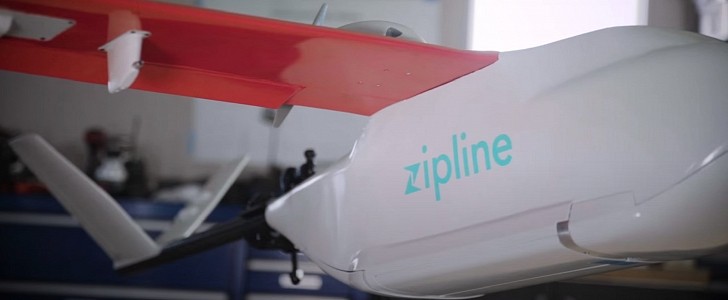San Francisco-based drone delivery company Zipline is sued for patent infringement for its advanced acoustic detection and avoidance system that it advertises as the Holy Grail of drone technology.
Back in June, Zipline unveiled what it claimed to be the first onboard, acoustic detection and avoidance (DAA) system for autonomous drones. The extremely accurate and lightweight technology is supposed to unlock instant drone delivery at scale in the United States. But Zipline is already having problems with its DAA, as research company SARA (Scientific Applications & Research Associates) is accusing it of patent infringement.
SARA has been around since 1989 and specializes in developing various cutting-edge technologies for autonomous machines. And it turns out that, among others, the company also came up with a “revolutionary acoustic DAA system”, for which it has a U.S. patent (dubbed the ‘115 patent).
Back in 2017, Zipline approached SARA, asking to incorporate its acoustic DAA technology in its delivery drones. The two companies signed a non-disclosure agreement and in the following years, Zipline obtained confidential information about SARA’s products and technology, including, of course, the ‘115 patent. But in 2018, communications between the two ceased.
Now, four years later, Zipline unveils its Holy Grail of drone tech, which, according to SARA, infringes one or more claims of its ‘115 patent. SARA accuses Zipline of unauthorized use of its proprietary technology, with the drone delivery company manufacturing, using, and selling UAVs (unmanned aerial vehicles) featuring the acoustic DAA system since the spring of 2020. SARA has now requested a trial by jury to settle the issue.
Zipline’s so-called Holy Grail is a system that consists of a series of small, lightweight, acoustic microphones and onboard processors that help drones navigate safely in the most uncontrolled, complex airspaces. As boasted by Keenan Wyrobek, Zipline’s CTO, the system is agile enough to operate with the finest of margins, being able to think for itself and to adjust in real-time, adapting to changes in the flight path. The DAA provides 360-degree awareness with a range of up to 6.560 ft (2,000 meters).
UPDATE: "Our revolutionary Detection and Avoidance system uses proprietary technology that Zipline independently developed, specifically for our aircrafts. This lawsuit entirely lacks merit and we will vigorously defend ourselves." - a Zipline spokesperson told us regarding the lawsuit.
SARA has been around since 1989 and specializes in developing various cutting-edge technologies for autonomous machines. And it turns out that, among others, the company also came up with a “revolutionary acoustic DAA system”, for which it has a U.S. patent (dubbed the ‘115 patent).
Back in 2017, Zipline approached SARA, asking to incorporate its acoustic DAA technology in its delivery drones. The two companies signed a non-disclosure agreement and in the following years, Zipline obtained confidential information about SARA’s products and technology, including, of course, the ‘115 patent. But in 2018, communications between the two ceased.
Now, four years later, Zipline unveils its Holy Grail of drone tech, which, according to SARA, infringes one or more claims of its ‘115 patent. SARA accuses Zipline of unauthorized use of its proprietary technology, with the drone delivery company manufacturing, using, and selling UAVs (unmanned aerial vehicles) featuring the acoustic DAA system since the spring of 2020. SARA has now requested a trial by jury to settle the issue.
Zipline’s so-called Holy Grail is a system that consists of a series of small, lightweight, acoustic microphones and onboard processors that help drones navigate safely in the most uncontrolled, complex airspaces. As boasted by Keenan Wyrobek, Zipline’s CTO, the system is agile enough to operate with the finest of margins, being able to think for itself and to adjust in real-time, adapting to changes in the flight path. The DAA provides 360-degree awareness with a range of up to 6.560 ft (2,000 meters).
UPDATE: "Our revolutionary Detection and Avoidance system uses proprietary technology that Zipline independently developed, specifically for our aircrafts. This lawsuit entirely lacks merit and we will vigorously defend ourselves." - a Zipline spokesperson told us regarding the lawsuit.






